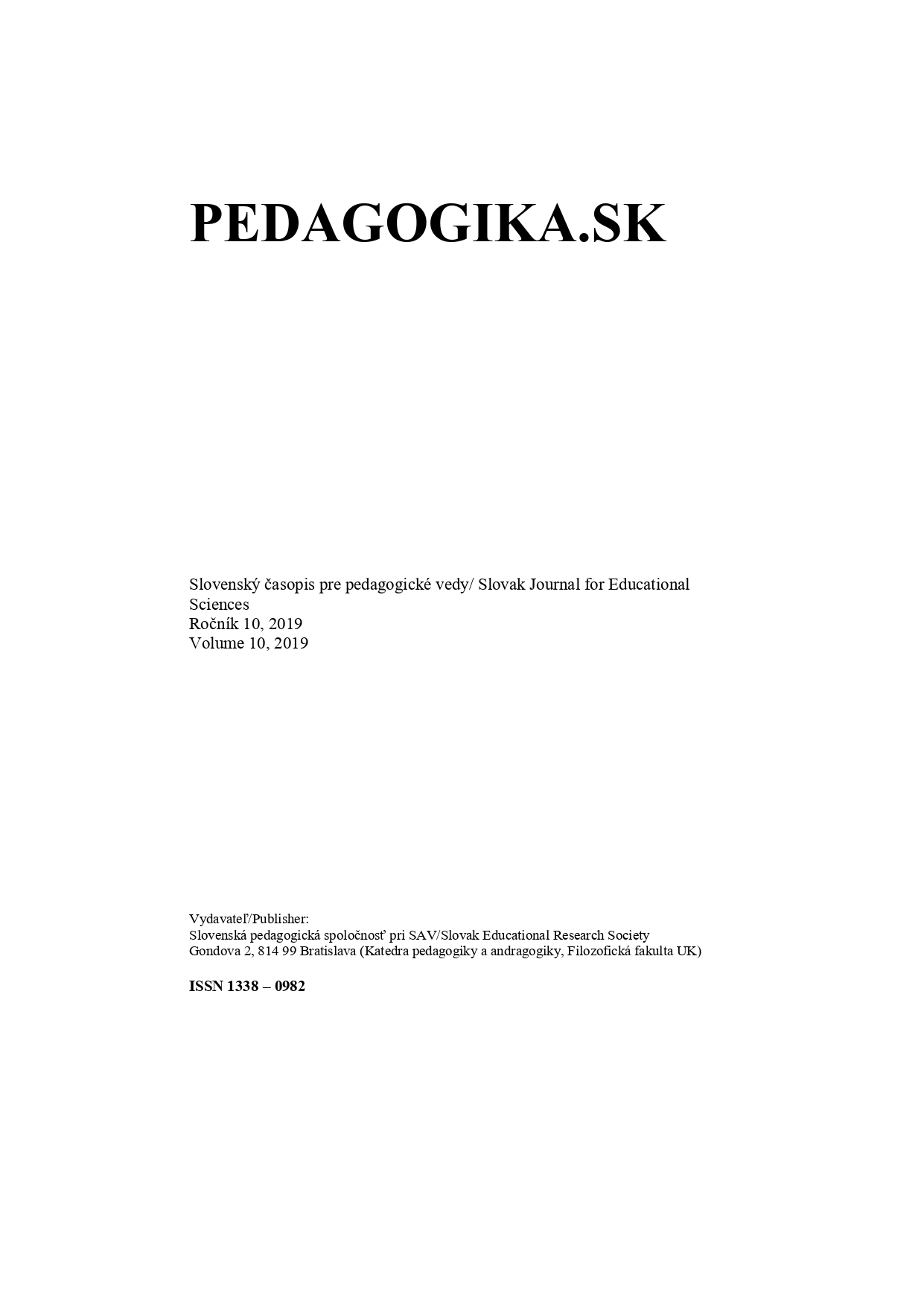The use of digital teaching aids in primary education with emphasis on students from socially disadvantaged backgrounds
The use of digital teaching aids in primary education with emphasis on students from socially disadvantaged backgrounds
Author(s): Martina PorubčinováSubject(s): Educational Psychology, State/Government and Education, ICT Information and Communications Technologies, Inclusive Education / Inclusion, Sociology of Education
Published by: Slovenská pedagogická spoločnosť pri SAV
Keywords: Digital access; digital ethos; digital teaching aids; students from socially disadvantaged environment; digital divide;
Summary/Abstract: Authors point to “potential educational inequalities generated by technological change” as factors limiting the rise of the information society (Arntz et al. 2016, p.25). Not only lack of access to digital technologies but also lack of positive attitudes towards the use of digital teaching aids can be identified as a risk factor of digital literacy development, particularly among students from socially disadvantaged backgrounds. (Livingston-Helsper 2007; Zevenbergen 2007; Czerniewicz - Brown 2013). The empirical findings of a slightly negative attitude towards the acquisition of digital skills as well as lack of access to Internet that remained at level 25% in 2018 to compare 26% in 2015 according to Velšic (M. Velšič, 2018) declare the persistence of digital divide in socio-demographic comparison in Slovakia. Based on the analysis of foreign and domestic studies (PIAAC, PISA ICILS) and empirical surveys in Slovakia, we monitor the persistence of the socio-demographic digital divide in Slovakia. Whereas the digital socialization takes place not only in non-formal and informal way but also within formal education system, we present findings of the use of digital teaching aids in formal education Based on empirical findings on the sample of Slovak primary schools' teachers in towns Spišská Nová Ves, Nitra a Lučenec we followed a) the perception of digital pupil access by teachers, the ways of compensation for the lack of digital access of students in the school environment, b) examines the teachers' views on benefits and limits of using digital educational aids in schools with students from socially disadvantaged backgrounds a c) identifies ways of compensation for a insufficient digital access of students. According to teachers' statements, not only the lack or insufficient digital access but also the insufficient digital pedagogical ethos of students and parents (that covers the attitudes towards the use of digital teaching aids) can be classified as a barrier to the use of digital teaching aids. Introduction of free computer lessons in after school club in schools, the use of digital teaching aids in preparing for school at a school club, are perceived by teachers as a way of compensation for the lack of digital access for students from a socially disadvantaged environment.
Journal: PEDAGOGIKA.SK
- Issue Year: 2019
- Issue No: 4
- Page Range: 274-294
- Page Count: 21
- Language: English

